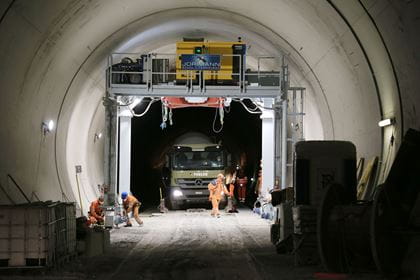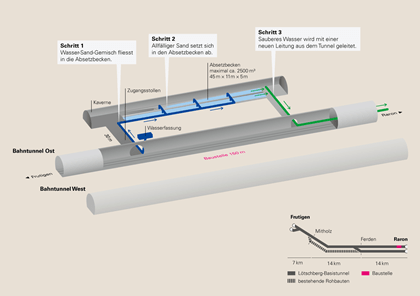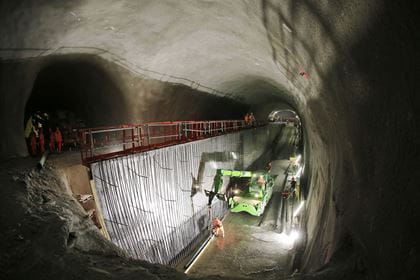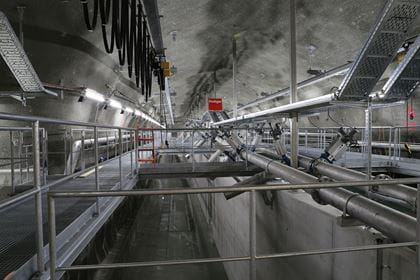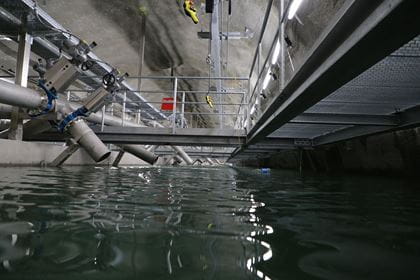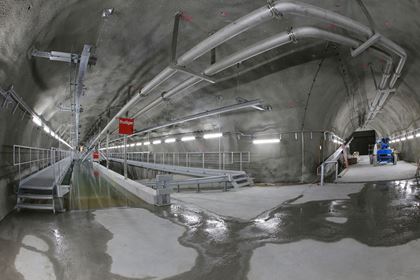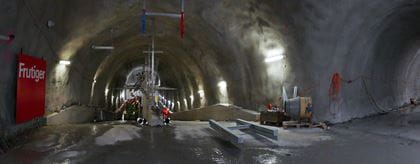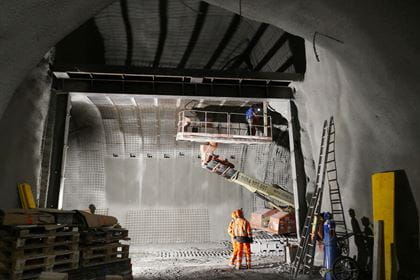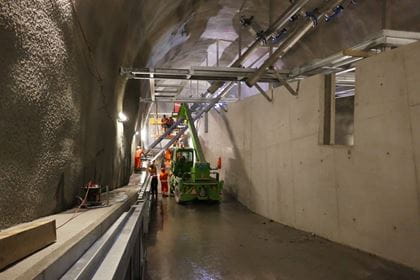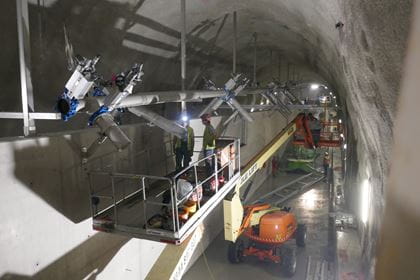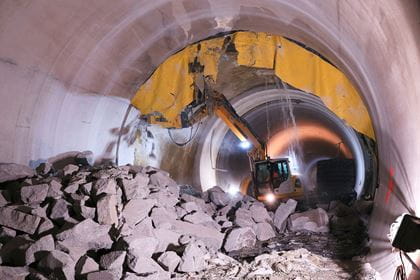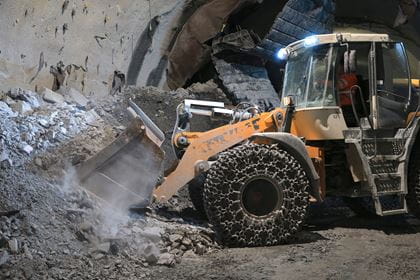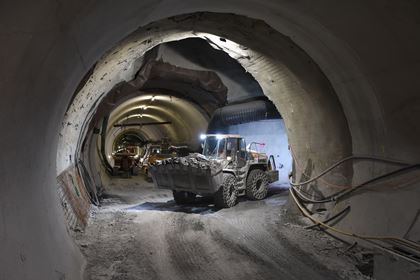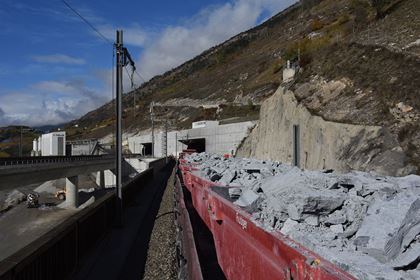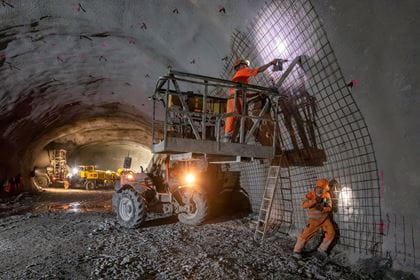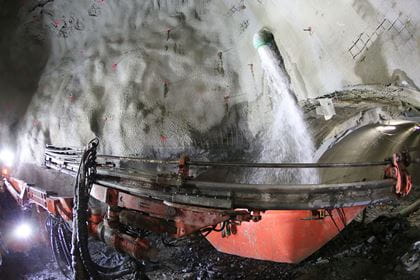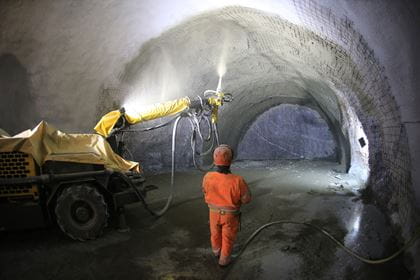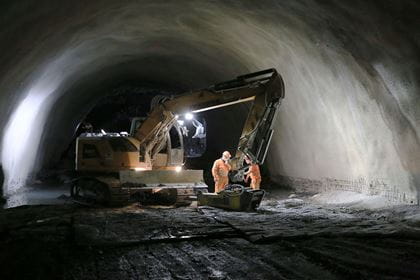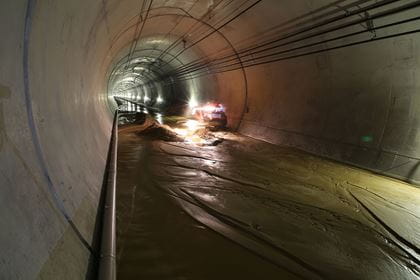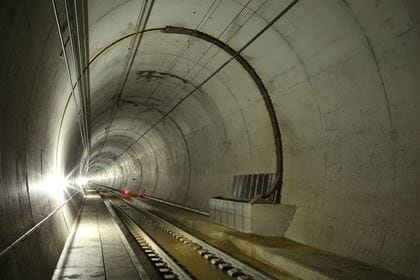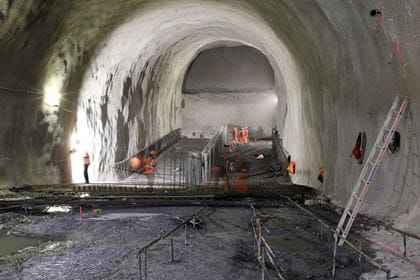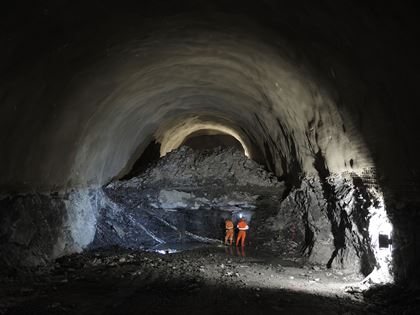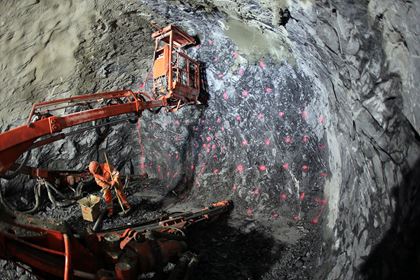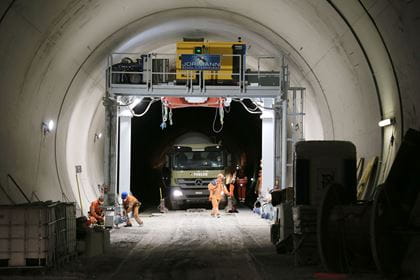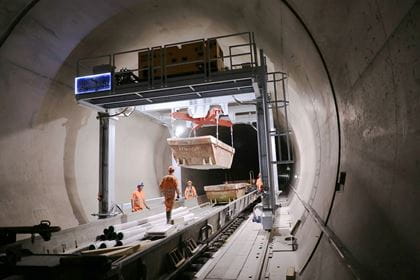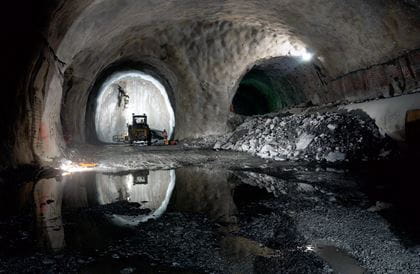Refurbishing of the eastern bore of the Lötschberg Base Tunnel
Following an event of water and sand ingress in the eastern bore of the Lötschberg Base Tunnel in the spring of 2020, BLS refurbished the affected area. It excavated a large cavity to the side of the bore so that sand can be deposited there in future.
In February and March 2020, water and sand were washed into the dual-track section of the Lötschberg Base Tunnel. As a result, the tunnel’s eastern bore had to be temporarily closed to trains three times in succession. Between August 2020 and February 2021, BLS excavated a cavern outside the tunnel bore, into which the water can run off and the sand be deposited. During the construction period, trains were diverted through the western bore on a single track.
Why did sand enter the tunnel?
How BLS refurbished the affected area
In the affected area, BLS excavated a cavern to the side of the eastern tunnel and installed a sedimentation tank there with a capacity of more than 2,000 cubic metres. The mountain runoff flows into this sedimentation tank; any sand is then deposited as sediment and the purified mountain runoff diverted in a new pipeline to the Raron portal. As part of the regular maintenance work in the tunnel, the deposited sand can in future be removed from the tunnel in rail wagons. The cost of the refurbishment will be around 15 million Swiss francs.
With the refurbishment project, BLS developed a good solution within a short period of time which was successfully implemented before the snowmelt in the spring of 2021, thus significantly reducing the risk of more sand entering the tunnel. However, residual risks cannot be entirely eliminated because karst is unpredictable. BLS will closely monitor the situation with a comprehensive monitoring concept in the coming years and can expand the cavern if and when required.
